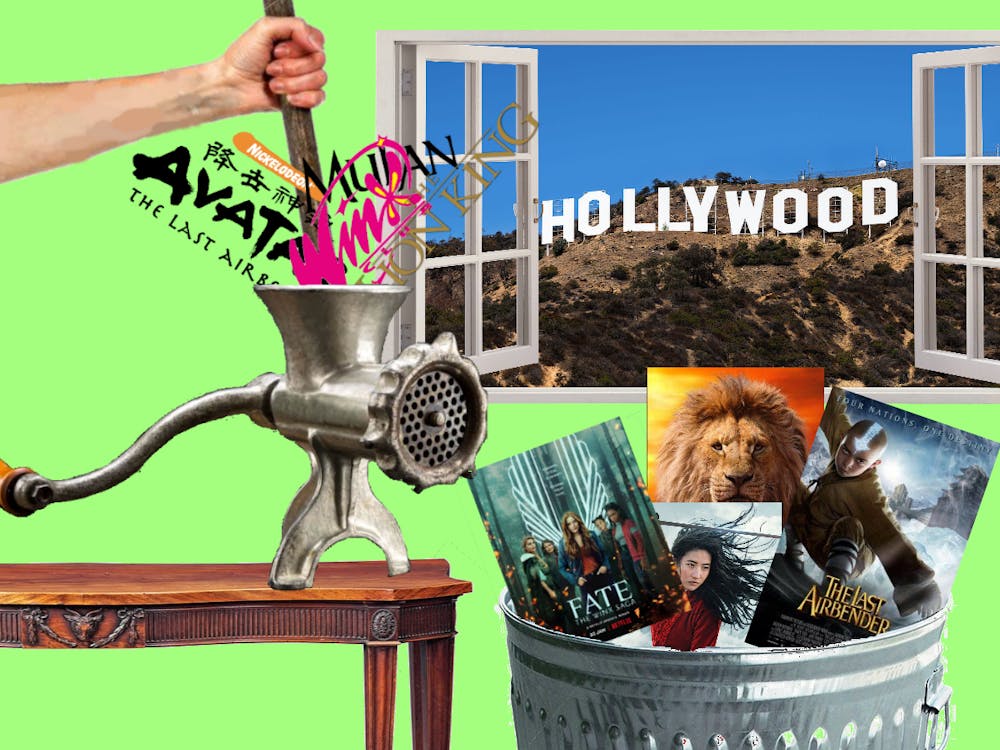The hour-long premiere of “Avatar: The Last Airbender” (2005) debuted 16 years ago, yet here we are in 2021, still reflecting over both its thematic depth. The film masterfully engages with contemporary topics such as nationalism and propaganda in its exploration of the Fire and Earth Nations — and offers meaningful character development, both internal and external, as we navigated the spectacular character arcs of Katara and Zuko.
Likewise, “Shingeki no Kyojin,” better known in the United States as “Attack on Titan,” is currently one of the most-watched shows in America, featuring man-eating Titans that the people of Paradise Island must fight in order to leave humanity intact. The show’s unparalleled foreshadowing, sensational character cast, and philosophical groundedness, rival those of the first six seasons of “Game of Thrones,” “Breaking Bad,” and many of the other most popular TV shows, as it jumps from conversations about freedom to the value of relationships.
Animation is beyond capable of creating captivating worlds and evoking emotional feelings that leave watchers wanting more, but that doesn’t seem to stop directors from creating “live-action” adaptations that are hard to view as anything but money-grabs. The most infamous of these is, without a doubt, M. Night Shyamalan's “The Last Airbender” (2010). The white-washing of Sokka and Katara, the neverending and unnecessary narration, the horrible retelling of the original story, and terrible special effects all certainly contribute to the movie’s well-deserved status of being among the worst films ever created.
But they all suggest a more general issue within live action media: that the unique worlds of animation, full of their many quirks — whether those quirks be special power systems, such as bending in Avatar, or wackily designed characters, such as those of “Inside Out” (2015) — simply don’t translate well into film.
Perhaps it’s unfair to generalize the disaster film that is Shyamalan’s “The Last Airbender” to all other live actions, but that just doesn’t seem to be the case. Take, for example, the newly-released adaptation of “Winx Club” (2004) on Netflix, “Fate: The Winx Saga” (2021). Departing from the child-like properties of its predecessor, “The Winx Saga” is far more “mature.” It adds tensions to the main cast of fairies through the creation of love-triangles, subtly deals with pressing contemporary issues such as fatphobia, and is more than willing to be gory, opening up its first episode with the murder of a man. Maturity in and of itself isn’t the problem here; rather, the issue is the fact that live-action shows such as “The Winx Saga” must be mature. “The Winx Saga” could never capture the episodic fantasy about cute-yet-badass fairies who discover more about their powers that is “Winx Club.” Instead, because “The Winx Saga” is a live-action show, it has to be darker, more complex.
But therein lies the issue: if all that live-action films and shows can offer us is complexity and “mature” themes, themes that are already prevalent in animated shows/films such as “Attack on Titan,” of what benefit are they?
My answer is simple: nothing. There is nothing a live-action film can do that animation can’t. Live-action adaptations, as they seek to differentiate themselves from their animated counterparts, have an inherently limited scope as to their genre. Animation is “for kids” and live-action films and shows are “for adults,” and out of this dichotomy is birthed a myriad of media that should’ve stayed in its original forms.
Of course, this is as much an attack on the very intention of translating animated media for the sake of making it more palatable to adult audiences as it is on live-action media. The very association with animation and kids is flawed. There are far too many animated shows — like “The Amazing World of Gumball” (2011) — that, while seemingly packaged for children, include humor that many adults would enjoy.

There is, of course, also the issue of branding shows/movies as “for kids” and “for adults.” Marvel movies such as “The Avengers” sell so well precisely because they break down this dichotomy: rather than seeking to destroy “childish” creations such as superheroes, they use heroes to their full potential on the big screen.
Of course, this isn’t to say that live-action films and shows aren’t an individually enjoyable medium. Certainly, one could find “The Winx Saga” a captivating story or the Disney+ retelling of “Mulan” (2020) more enjoyable than the animated original. However, this doesn’t address the fact that live-action adaptations, as they currently are, lack the uniqueness to stand on their own. If live-actions can do what Marvel Studios does, by creating new, real-life worlds that allow for animated stories to flourish on a new medium, then I would certainly receive them more positively. But until then?
Live-actions — especially adaptations — suck. Watch animation instead.









